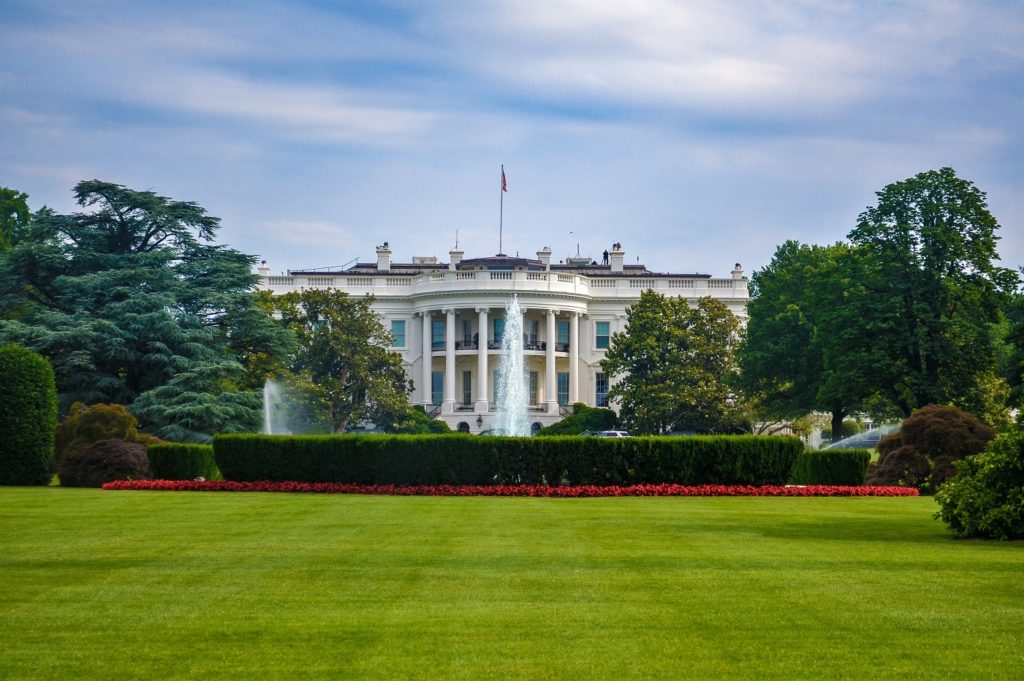The beginning of September in years divisible by four is the traditional start of the general election campaign for the presidency of the United States—the time when the two major parties’ conventions are over, the somnolent American people begin to awaken and pay attention to politics, and the presidential candidates move their campaigns into high gear.
In the midst of campaign hubbub, it’s not easy to stop and take stock of the office of the presidency itself, to consider why it was designed as it was, how it has come to function in the 231 years since the first president took office, and whether its present condition is a healthy one. But a very large literature on the presidency by historians, political scientists, and legal scholars is available to help us think these things through. And lately some new books on the subject of the presidency have added to our store of knowledge—and arguments—on the American chief executive.
A quarter century ago the late Forrest McDonald observed, in The American Presidency: An Intellectual History, “a central dilemma of constitutional government”:
It is vital, for the safety and well being of the nation, that there be a chief executive officer who can, when circumstances warrant it, operate outside or above the law. Yet it is dangerous as well, hence the need for restraints and limits on presidential authority. The dilemma is this: Though the restraints and limits are necessary, they are not, in the nature of things, susceptible to delineation and definition.
Start your day with Public Discourse
Sign up and get our daily essays sent straight to your inbox.
In making this point, McDonald was on the same wavelength as the Princeton constitutional scholar Edward Corwin, who wrote, in The President: Office and Powers (1940):
Article II is the most loosely drawn chapter of the Constitution. To those who think that a constitution ought to settle everything beforehand it should be a nightmare; by the same token, to those who think that constitution makers ought to leave considerable leeway for the future play of political forces, it should be a vision realized.
Sounding a very different note is University of Virginia law professor Saikrishna Prakash, in his new book The Living Presidency: An Originalist Argument Against Its Ever-Expanding Powers. Prakash, who will discuss his book with me and Princeton professor Keith Whittington in an October 6 webinar sponsored by the James Madison Program, argues that “the US Constitution was supposed to be fixed,” but in fact it has been changed by our presidents “in ways that have effectively amended the original document.” He goes on to propose concrete steps that Congress might undertake to rein in the runaway executive branch.
Will a future Congress take Prakash’s counsel and actively push back on the powers of the presidential office? That might require that the American people loosen their attachment to presidents as tribunes of the people, and reacquire the founders’ more constrained understanding of the presidency as first and foremost a constitutional office, not a popular one. Jeffrey Tulis, a University of Texas political scientist, argued that the decisive transformation of the office, via the forging of a direct rhetorical connection with the sentiments of the people, was the work of progressives Theodore Roosevelt and Woodrow Wilson (the latter as both a scholar and a president). In The Rhetorical Presidency (1987), Tulis went so far as to call this a “second constitution” that had been “superimposed upon our original Constitution.”
In similar fashion, Cornell political scientist Theodore Lowi argued in The Personal President: Power Invested, Promise Unfulfilled (1985) that “big government,” starting with FDR’s New Deal, has so inflated the responsibilities of presidents—and popular expectations of their capacities—that every president is substantially doomed to fail. But countering these arguments is the case made by Baylor political scientist David Nichols, in The Myth of the Modern Presidency (1994), that all the essential features that we attribute to the “modern” presidency “in fact find their origins in the Constitution” the framers made. It was the American founders, he says, “who created the democratic modern Presidency.”
This argument seems destined to continue. Joining the fray now is Naval War College professor Stephen Knott, who has previously written several books on Alexander Hamilton and George Washington. In his new book The Lost Soul of the American Presidency: The Decline Into Demagoguery and the Prospects for Renewal, Knott takes up the Lowi-Tulis side of the debate, except that he dates the transformation of the constitutional presidency into the rhetorical-plebiscitary-demagogic presidency neither to Franklin Roosevelt, nor to Woodrow Wilson, nor to Theodore Roosevelt. These presidents make notable appearances in Knott’s book, but he makes a case for blaming Andrew Jackson, and even Thomas Jefferson, for shifting the ground of the office by claiming to represent the “national will” in a direct and unmediated way. Few presidents since Jefferson measure up to Knott’s demanding standard of truly constitutional statesmanship—Lincoln and Eisenhower, and perhaps Taft.
On one point Knott is clearly correct, in my view: “The current process of selecting the nation’s presidents has contributed to the decline of the office.” No one has ever explained the relationship between the presidency and the manner of its occupants’ arrival there better than University of Virginia political scientist James W. Ceaser, in his 1979 book Presidential Selection: Theory and Development. Ceaser argued four decades ago that changes like the preponderance of primaries in the nomination process had fundamentally changed the kinds of candidates we get to choose between. The line from George McGovern to Donald Trump is discernibly straight.
Can the American people and their representatives set aside their immediate interests and attachments and “think constitutionally” about the presidency, and about how we choose presidents? Both Prakash and Knott are obliged to hope so. But the passionate partisanship of the most attentive Americans, and the inattentiveness and apathy of the least partisan Americans, make this hope seem forlorn indeed.











